A body of international research continues to show the link between breast cancer and mushroom consumption. The Power of Pink campaign assists in increasing awareness of the protective properties of mushrooms as indicated by the research…
Mushrooms are rich in anti-oxidants which aids the good for immune system and they also contain selenium in quantities much higher than any other plant food. Selenium has been found have an anti-cancer affect on prostate cancer particularly. These elements work together to protect the body against cancer by getting rid of free radicals and defending the body against invading organisms. Mushrooms are also a low energy dense food that can help lower calorie intake which in turn prevents obesity, a proven risk for Breast Cancer.
But the key is that fact that mushrooms contain phytochemicals that are found to specifically suppress BREAST & PROSTATE CANCER:
Mushrooms contain a fatty acid namely conjugated linoleic acid that has the ability to inhibit two enzymes called AROMATASE & 5-ALPHA-REDUCTASE that are involved in these cancers.
Many mammary tumors are hormone sensitive and the estrogen hormone is a major factor in the development of breast cancer, especially in post menopausal women. One of the reasons is that although the ovaries stop producing estrogen other cells (fat & breast cancer cells) continue to do so.
The enzyme α-Aromatase responsible for the production of estrogen : converts androgen to estrogen which in turn promotes the development of breast cancer in post menopausal women. However mushrooms contain conjugated linoleic acid that inhibits aromatase and thus inhibits cancer. Aromatase has been linked to breast, ovarian, uterine and prostate cancers .
The same applies to the enzyme 5-alpha-reductase which converts testosterone that plays a role in the development of prostate cancer. As in the case of aromatase, conjugated linoleic acid is inhibiting this enzyme thus preventing or controlling prostate cancer.
Tamoxifen is a widely used prescribed drug which works by competing with the estrogen on the same receptor on the tumor cell and obstructs the active estrogen. It is effective but has unpleasant side effects and especially in remission it cannot be taken forever. That’s where mushrooms can act as a natural substitute for controlling the production of estrogen.
Research behind the protective role of mushrooms:
It was found that the occurrence of breast cancer in China was 5 times lower than in developed Western Countries. Whilst also bearing other factors in mind, it is a fact that China is a world authority when it comes to mushroom consumption. And it was the huge mushroom consumption per capita that sparked the research.
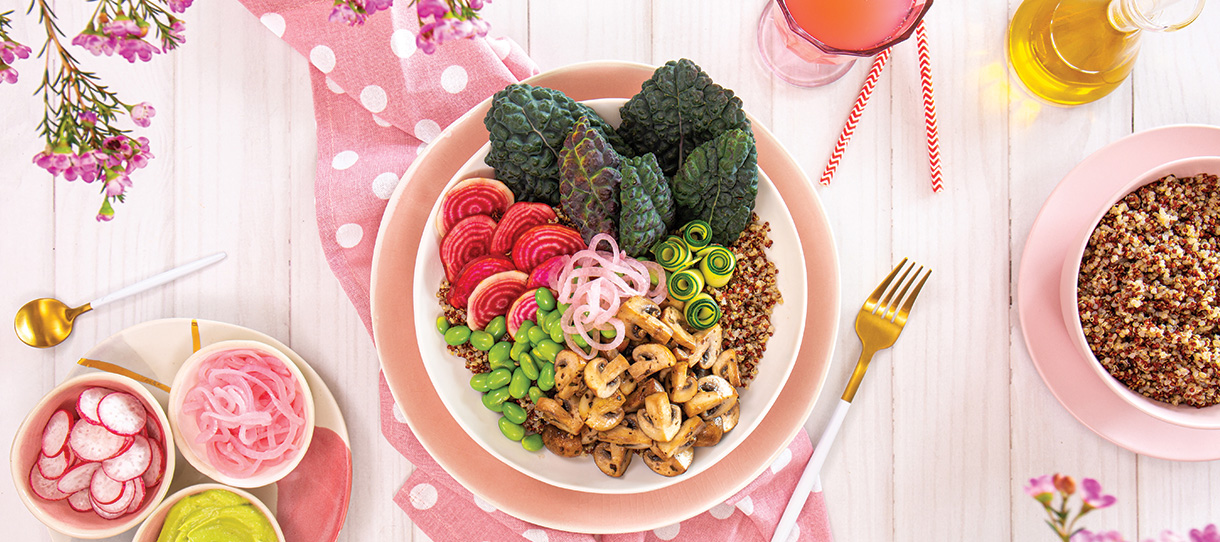
Mushroom Buddha Bowl
Makes 2 bowls
Ingredients:
1 cup cooked quinoa, red, white or mixed
1 cup kale
Juice of ½ lemon
½ cup edamame beans, steamed
250g white button mushrooms, sliced
½ cup thinly shaved raw beetroot
1 zucchini, sliced into ribbons
¼ cup fresh radish slices
2 Tbsp pickled onions
Salt and pepper
Creamy guacamole to serve:
1 ripe avocado
Juice of ½ lemon
Handful coriander leaves, picked of the stems
Sea salt
Pinch chilli flakes
Method:
Shred the kale into a prep bowl or keep leaves whole if you like the look. Drizzle the kale with a little olive oil and lemon juice. Season lightly with salt. Massage the kale leaves well. This tenderizes them and removes any bitterness. Set aside.
In a large frying pan on high heat cook the mushrooms in a drizzle of olive oil. Season them to taste and keep warm.
Combine guacamole ingredients in a small jug. Using an immersion blender blend until very smooth.
Assemble the buddha bowl by beginning with a layer of quinoa. Top with kale, edamame beans, beetroot, zucchini ribbons, mushrooms, pickled onions and radish.
When ready to serve squeeze bowl with some fresh lemon juice and spoon over the creamy guacamole and use it as a rich and flavourful salad dressing.
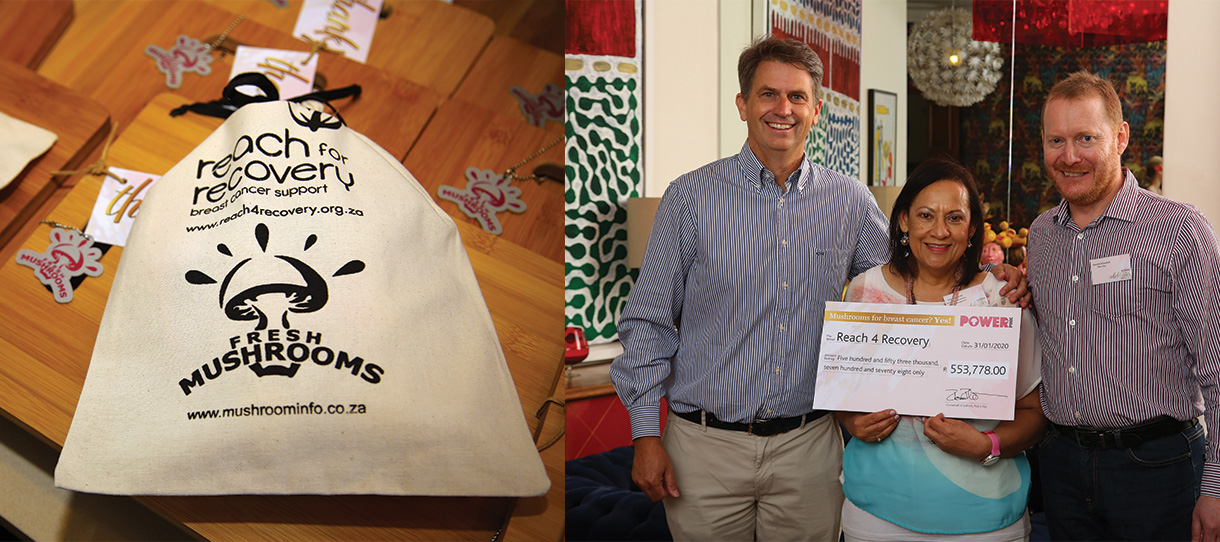
The Power of Pink campaign celebrates 10 years with gratitude
“When we first launched the Power of Pink campaign with the South African Mushroom Farmers’ Association (SAMFA) and Pick n Pay in October 2010,” says Reach for Recovery’s Management Board Chairperson, Stephné Jacobs, “we had no idea of the POWER we would unleash through our incredible partners nor the extent of the success that lay ahead. Today I can say, with enormous gratitude, that our achievements through this campaign have been nothing more than miraculous. In October 2010 we raised R323 000. Now we consistently raise more than R500 000 a year.”
Power Of Pink Campaign Highlights:
- Total funds raised from all October campaigns between 2010 and 2019: R5 177 628
- Total number of financially challenged women assisted with silicone prostheses (Excluding 2019): 6523
“We are extremely delighted to have achieved the R5m mark in the 10th year of the Power of Pink campaign,” says SAMFA chairperson Ross Richardson. This Pink campaign is one of very few breast cancer fundraising campaigns that support survivors who cannot afford reconstructions after mastectomies. SAMFA and Pick n Pay value our partnership with Reach for Recovery and are in awe of this 100% volunteer-based NGO and the extent of the incredible work that they do.”
Reach for Recovery South Africa consists of only 210 active voluntary members and these extraordinary women, breast cancer warriors themselves, achieved the following during 2019:
- Supported 5923 patients in hospitals and through continued visits thereafter
- Handed out 3013 care bags with support items and information leaflets to post-operative breast cancer patients in hospitals. (The production costs of the care bags and their content are also covered by the Power of Pink campaign)
- Fitted 666 state patients who had a mastectomy and no medical aid with prostheses at no cost. (Breast prostheses are available in 3 colours to match skin tones as well as in different sizes so that the patient can have the correct size fitted. Reach for Recovery was able to purchase the prostheses at an average of R881 per unit where the average price of a single prosthesis on the open market is anything from R3500 upwards)
“We have done more than we thought we could,” added Jacobs, “but having reached this milestone we can just see how much we still have to because there are thousands of women in dire circumstances and in desperate need of our support. We have changed the lives of over 6000 women so far. With the continued support of our partners and all South Africans there are many more lives we can change!”

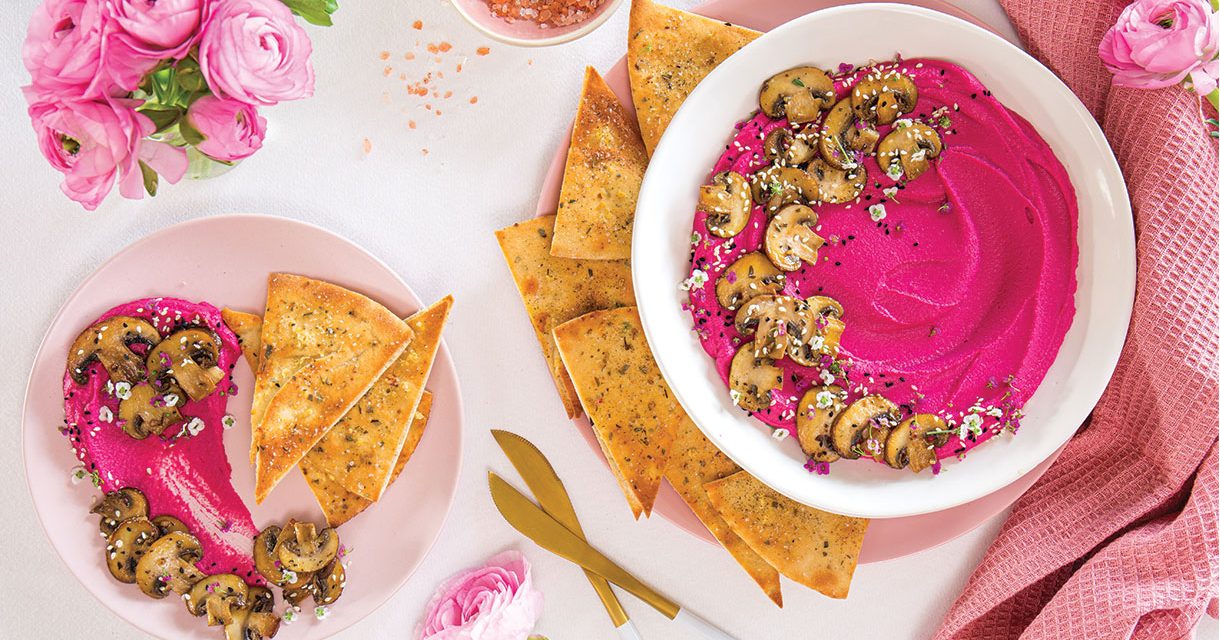

















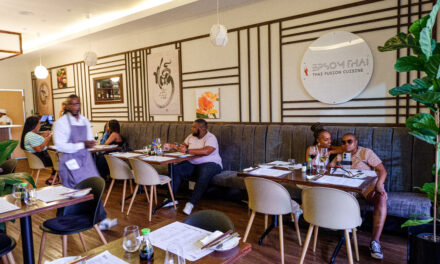

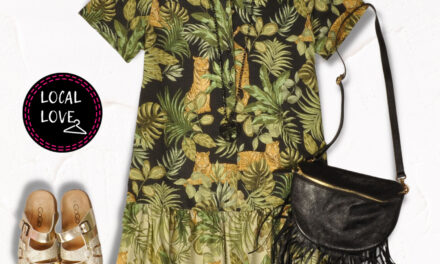
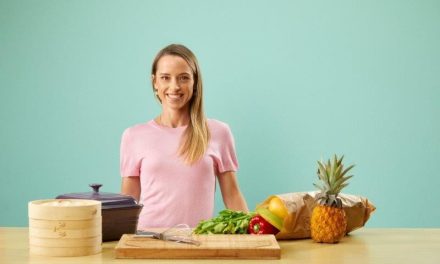

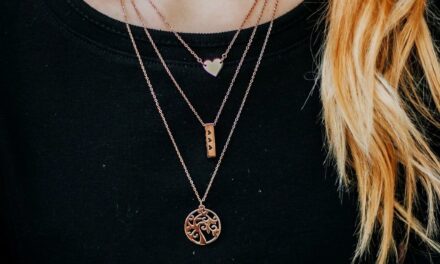



0 Comments